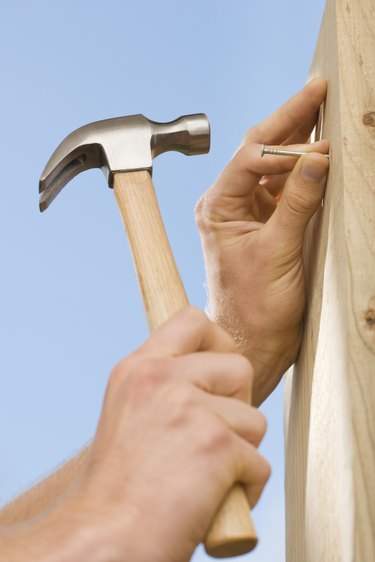
Wood shrinks as it dries, and it can warp if one edge or face shrinks more than another. Physical differences among wood species, including the size and thickness of cell walls, and the chemical composition of a tree can affect its tendency to warp. Trees within a species can vary greatly depending on an individual tree's age, growth rate, stress and the conditions of the growing site. In spite of that, some species are known for being particularly resistant to warping.
Port Orford Cedar
Video of the Day
Port Orford Cedar is a creamy white wood with a straight, even grain and fine texture. Although it's fairly lightweight, it's hard and warps very little. Port Orford Cedar is easy to work with and is used to make archery arrow shafts, boats, moth-proof closet linings and in general construction. The wood has a ginger-like smell and is highly resistant to decay.
Video of the Day
Redwood
Redwood is a strong, lightweight wood with thin cell walls that don't shrink and swell as much as other woods do. That means it's less likely to warp. According to the United States Department of Agriculture, redwood shrinks less than other common domestic softwoods. Redwood heartwood is resistant to decay, and it's easy to work with. It also ages very well.
Cypress
Cypress is a pale, honey-colored, durable wood with a straight grain that resists warping. It also tends to have few knots. It's easily worked with hand or power tools, and it is a suitable choice for siding, fences, interior walls and ceilings, shutters and window boxes. Although it will weather naturally outdoors, it's best to seal it with a stain or paint. Cypressene, an oil contained in the wood, makes it resistant to decay and insects.
Pine
Pine is a honey-colored or straw-colored wood with a straight grain and pleasant smell. Although its softness makes it prone to dents and abrasions, it's highly resistant to warping. It's often used to make Amish wood furniture, and it's also used in light framing, roof decking and outdoor projects. It takes a stain well and is easy to finish and paint. It also resists splitting when it's nailed.
Other
Other woods that are resistant to warping include cherry, walnut and yellow poplar. Cherry is a strong wood with a tight grain and attractive reddish-brown color, and it's usually used to make furniture. Walnut is also a popular choice for furniture. It has a close grain that resists warping and a color that varies from golden brown to almost purplish. Yellow poplar contains tannins that make it resistant to decay. It's a popular choice for siding because it doesn't shrink or warp much. Oak is a strong, durable pale wood that resists warping and decay. It's used to build Amish furniture and outdoor furnishings.